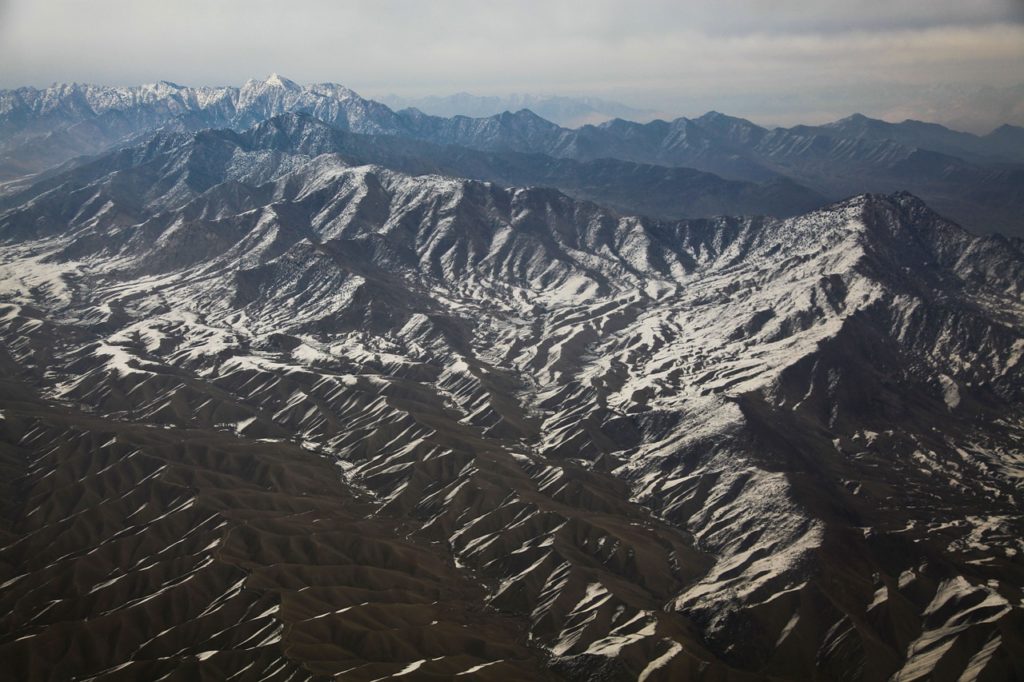Being surrounded by land can make economic progress especially difficult for developing countries. With no direct access to a port, landlocked countries can fall behind coastal neighbors that reap the significant economic benefits of maritime trade.
Abid Amiri, a director in Afghanistan’s Ministry of Finance, recently published an essay about Afghanistan’s plans to overcome its geographic challenges, detailing new projects and strategies to capitalize on the country’s inland location. He acknowledged that Afghanistan faces steep challenges, as the Human Development Index shows that landlocked countries have significant levels of poverty, poor health care, high child mortality rates, low standards of living, and struggling education systems. In 2016, the Index reported that 10 of the 32 countries with the lowest scores had no coastal border.
Facing Challenges
Afghanistan’s location between six countries, including Pakistan, Iran, and Tajikistan, places its capital, Kabul, about 1,400 kilometers from the nearest port, which is in Karachi, Pakistan. As a result, Afghanistan exports goods primarily to neighboring Iran, Pakistan, and India. Afghanistan must also deal with issues that arise from the need to transport goods across other countries in order to participate in international shipping markets, according to Amiri.
For example, in 2011, when the United States killed 24 Pakistani soldiers with unmanned drones, the Pakistani government retaliated by blocking supply routes to Afghanistan. Consequently, containers of perishable goods were stuck in Karachi, where they spoiled, and businesses suffered enormous losses when non-perishable goods they depended on couldn’t leave the port. These issues have contributed to a significant trade imbalance and a $3.2 billion trade deficit.
While Afghanistan has been building and improving its infrastructure since 2002, the country’s rugged, mountainous terrain continues to hamper efforts to construct a nationwide transportation system. A shortage of funding, unwieldy policy and regulations, and lack of a trained workforce also have constrained advances in infrastructure improvement and limited domestic and international trade. Coupled with decades of war, ongoing poverty, and other issues, infrastructure and trade issues contribute to a difficult path forward for Afghanistan. However, for the first time, the Afghan government has put together a long-term, strategic plan to build infrastructure that focuses on making Afghanistan “land connected” rather than landlocked.
Amiri believes that Afghanistan is in a “unique position” to become a regional hub between Central and South Asia and for east-west trade routes between Europe and China. Further, the country’s five-year infrastructure plan focuses investments on regional developments that could reap lasting domestic benefits.

Opening an Energy Corridor
South Asia is considered “energy poor,” and Afghanistan could play a significant role in connecting Central Asia—an “energy-rich” region—with South Asian countries that have growing energy needs. Bulk power transfers, which will be vital to countries such as Pakistan, would cross Afghanistan on their way from Central Asia.
Three high-dollar energy-transfer projects already are in the works. A TAP transmission line that would cross western Afghanistan on its way from Turkmenistan to Pakistan would carry as much as 4,000 megawatts of energy. The CASA-1,000 transmission line would transmit more than 1,000 megawatts of electricity from central Asia to Pakistan, crossing Afghanistan, and the TAPI gas pipeline would cross Afghanistan en route from Turkmenistan to India and Pakistan. Together, these three projects are expected to cost about $14 billion.
Transporting Goods and Merchandise
Building a strong rail and highway system will allow Afghanistan to better transport goods domestically and connect with international trade routes. These transportation corridors will open new avenues to the sea. One of these is a rail route that will allow Afghanistan to import and export goods to and from Europe through Turkmenistan and the Caspian Sea.
Developing rail corridors is an especially high priority for the Afghan government. A national railway would also connect with lines from Turkmenistan and Iran, and other Asian routes. The government also plans for spurs to several ports, which would place Afghanistan on rail lines connecting Central Asia with the Arabian Peninsula and beyond. To better facilitate transport logistics, the Afghan government also is proposing investment in standardizing procedures and regulations, and computerization. It also hopes to resolve issues such as the lack of cold-storage facilities and insurance.

Creating a Data Pathway
The primary carrier of data between Asia and Europe is maritime fiber installed under the Mediterranean Sea, the Suez Canal, and the Red Sea that then runs through the Arabian Peninsula and Indian subcontinent and on to Asian destinations. The fiber handles about half of the world’s Internet traffic, but it is susceptible to damage and needs ongoing maintenance. Because the route is so long, data needs about 130 milliseconds to travel its length.
Combining regulation reform and private-sector investment could improve Internet connectivity through new fiber installation with more connections, thus making Afghanistan the most efficient route between Europe and Asia. Amiri states that such a pathway could lower costs, improve the speed of the Internet, and open up more services to users. The new route also could raise millions of dollars in transit fees for Afghanistan.
Amiri believes that by developing into a regional hub to move energy, data, and goods, Afghanistan is poised to offer shorter, more reliable transit routes between Europe and Asia.

